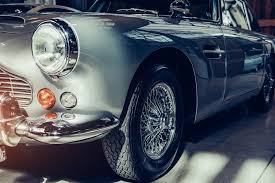
You have found the right place if you're looking for an iconic 1980s sports car. Below are some examples we love. We also include Pontiac Fiero GT as well as the GM F-Body and the Saab Turbo 16S GT GT. What other 1980s cars are worth your attention? Continue reading to find out more about the performance history of each model.
Pontiac Fiero GT
From 1984 to 1988, Pontiac Fiero produced its first production vehicle. It was a two seat mid-engine sports car. Pontiac saw the Fiero as a moral victory and a viable alternative for Chevrolet's Corvette. Although initially marketed as a commuter vehicle, the Fiero was in fact a mini with high-mileage to meet CAFE standards.
GM F-Body
The GM-80 Camaro/Firebird would have remained part the GM F-Body range, but with an updated design and performance. The third-generation Camaro's platform has been redesigned to reduce weight and improve handling. Although the car used steel structural frames and molded panels, engineers looked into extruding aluminum or rolling steel tubular structures. Ultimately, they chose composites because of their corrosion resistance and cost savings.

Saab Turbo 16S GT
Saab's Turbo 16S was a popular model from the 1980s. Saab started exporting its cars in 1982 and introduced the Automatic Performance Control (APC) in 1982. This allowed the car's ability to run on different gasoline grades without causing engine damage. GLE and Turbo both received central locking doors. Turbo also received Asbestosfree brakes. The front pads were semi-metallic and the rear were silica-based. The GLE model got a new central unit in 1984. Additionally, the bumper decor strips became larger.
Buick GNX
The Grand National Series and GM's 1982 and 1980 championships in this series inspired the GNX. Darrell Waltrip, the winning driver for Buick in those years, drove the GNX-based Buick Regal. The Buick Regal's 4.1-liter, naturally aspirated V6 was rated for 125 horsepower. Buick made the Buick-GNX until 1983.
Saab 944
The Porsche 944 was the first turbocharged high-performance sports car to arrive on the US market. It was built in just a few years, between 1983 and 1990. But it had enough performance that its owners would forget about the Porsche 911s. The 944 was built until 1991. Its production numbers are documented and range from 2,402 to 3,098. This model number can be found on the US market under WPOBA and WPOCB.
Porsche 959
The new Porsche 911 Carrera S is fast, but the old Porsche 959 isn't. The 959's handling is incredible, even though the body is only 1,450kg lighter. The car's anti-lock brakes are effective, but the body isn't as tight, so bumps on the way into Molecomb corner can catch you off guard. The Porsche 959 was a very popular sports car, so you might enjoy a fast drive.

Saab Turbo 16S GT GT manual gear
The Saab Turbo 16S GT is one of the few cars that was produced with a manual transmission. The car's 2.4-liter 4-cylinder engine and five-speed manual transmission provided a pleasant driving experience. The car's suspension system was designed for protection from road bumps. Its double wishbone front and rear suspension systems provided excellent handling and road feel. The rear suspension system featured a beam axle design, stabilised by a Panhard tube. The axle and chassis were connected by Watts linkages that allowed the driver access to various functions. The lower control arm was attached to the vehicle's base, while the upper link was located at the top and facing the rear. Power steering was also an option on the Saab Turbo 16S GT GT.
FAQ
How long does it take to become a good mechanic?
To become a skilled mechanic, you need years of experience and practice. Working under the guidance of a professional mechanic is the best way to learn how repair cars.
You will need to spend some time in a garage to learn as much about cars and mechanics as possible. You'll need to study mechanical engineering books on mechanics and car design.
And you'll also need to attend auto school.
It's important to start early. It doesn't matter if you're old or not to study automotive technology. Start studying automotive technology now to become a mechanic.
How long does an apprenticeship in automotive mechanics last?
It takes three years to complete an apprenticeship as an automotive mechanic. This includes two year at school as well as two years as an apprenticeship. The first year is spent learning all aspects of the trade, including theory, practical skills, and safety procedures. You will also learn to use tools efficiently and safely during this period. After you have completed the first year of training, you will be able to spend an additional year on-the job learning different trades. You'll have the opportunity to attend formal courses during these periods too.
The last year of your program will be spent earning qualifications and becoming certified. These include NVQs (National Vocational Qualifications), which are awarded after passing exams covering specific topics within the industry. There are also HNCs (Higher National Certificates), which cover general subjects like management, business administration, customer service, and more. City & Guilds certificates can be obtained for individuals who want to learn certain trades.
Are you looking for a career as an automotive mechanic?
For those who are passionate about excellence, automotive is a rewarding industry. You can only succeed in this field if you work hard and learn from others.
Excellent communication skills are essential as you will spend most of the time speaking to customers or other employees. It is important that you are willing to travel, work long hours and be able to commute.
If you are interested in a career working in automotive, then consider attending classes at community colleges. Many schools offer programs specific to students interested in sales, auto repair, or customer service.
Studying mechanical engineering is an option if you're interested in pursuing a degree. You can earn a bachelor's in as little four years.
In addition, many companies will hire graduates straight out of school. So, it is wise to begin searching for employment while you are still able to study part time.
After you complete your education, you may need to undergo some type of training before you can become an automotive technician.
You will need to pass the Automotive Service Excellence certification exam. This exam covers topics such as engine maintenance, brakes and suspension.
Once you pass the ASE test, your license can be applied for by the National Institute for Automotive Service Excellence.
Private individuals can have their vehicles repaired with a license. You'll be paid based upon the number of services provided.
Not all states require licensing. However, if you plan to work outside your home state, you'll need to obtain a license.
Some states don’t issue licenses until a certain amount has been completed. This could be you.
Statistics
- The U.S. Bureau of Labor Statistics (BLS) reports that the job outlook for automotive service technicians and mechanics is expected to decline by 4% from 2019 to 2029. (indeed.com)
- According to the BLS, the median annual salary for automotive service technicians and mechanics in the United States was $44,050 in May 2020. (uti.edu)
- According to the BLS, total auto technician employment is expected to exceed 705,000 by 2030. (uti.edu)
External Links
How To
How to properly diagnose your vehicle for repair
You should first examine the symptoms your car is showing to determine if it requires repairs. These steps will help you diagnose your car properly.
-
Check engine lights. You should inspect the dashboard lights, such as the engine light indicator and the oil pressure gauge. Also, check the battery light indicator. If any of these indicators have been flashing continuously for several days it could mean that there is something wrong with your vehicle.
-
Check the treads of your tires. Tires can become worn and cause problems in handling and braking. It is also important to inspect the wheel treads. They should be clean, and they should be smooth. To do this, remove the wheels and take them out. Check the tread condition with a flashlight.
-
You should always monitor the level brake fluid. It is important to keep track of how much brake fluid you have in your car. This ensures that your brakes work properly. If your brake fluid level is low they might not work properly when you apply pressure.
-
Test the suspension system. Most vehicles have a suspension system that absorbs shocks and vibrations. It gives you better control and allows for smoother accelerations and decelerations. You might notice a wobbly feeling or uncontrollable shaking in your vehicle if it has a problem with its suspension. If you are unsure if your vehicle is suffering from a suspension problem, put weight on the front and rear axles to check the movement.
-
Examine the steering wheel. The steering columns are what connect the steering knob to the rest. Steering columns can be damaged by accidents. You should replace your steering column if it feels loose or unstable.
-
Pay attention to the exhaust pipe. Exhaust pipes help move gases from the combustion chamber to the atmosphere. Your cabin will be effected if your exhaust pipe cracks or leaks. It is also important to repair any bends in your tailpipe immediately.
-
Look under your hood. Look underneath your hood to see if anything looks strange. There could be fluid leaking from your engine. Also, professional technicians should be called if you detect an unusual smell coming out of your engine compartment.
-
Make sure to check the air filter. Your vehicle's air filter collects dust and debris from the outside environment. A dirty filter can lead to a poor vehicle's performance. Replace your air filter regularly.
-
Check the fan belt. The fan belt that connects your vehicle to the transmission is called the engine fan belt. If the fanbel breaks, your engine won't turn. It is very easy to replace your belt. All you need is a screwdriver and some pliers.
-
Verify the radiator hoses. The radiatorhose carries water from your radiator to the engine. It can become cracked or damaged and leak hot liquid onto your engine. Repairing the hose is easy with a pair of needlenose pliers or a small wire brush.
-
Be sure to inspect your windshield wipers. Windshield wipers use electricity to remove snow and rain. If they stop working they could leave streaks behind on your window glass. The solution is to change the washer fluid.
-
You should inspect the cables. The battery cables provide power for the electrical systems in your car. Before you change batteries, disconnect the positive cable. Failure to do so can damage your alternator.
-
Be sure to check your headlights. The headlights provide illumination for the road ahead. If they don't work properly, it can cause poor visibility. Check the bulbs to see if they've burned out.
-
Check the lights. If you approach other drivers at night, lights will warn them. You may be distracted by the light and end up in an accident.
-
Check your brakes. Brakes will reduce the speed of your car in case of an accident. If they aren't working correctly, you could lose control of your car and crash.
-
Change your oil. Keep your engine lubricated with oil. It protects metal parts and prevents them from wearing too quickly. It is recommended that the oil be changed every other month.